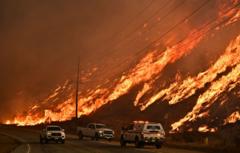As the Biden administration pushes for environmental protection in Alaska’s resource-rich areas, tribal communities express frustration over a lack of dialogue and the economic ramifications of these policies.
Alaska's Indigenous Voices: Conflict Between Resource Management and Tribal Needs

Alaska's Indigenous Voices: Conflict Between Resource Management and Tribal Needs
The Biden administration's resource restrictions in Alaska raise concerns among Native leaders regarding economic and social impacts.
The ongoing debate surrounding the Biden administration's initiatives to restrict resource development in Alaska's National Petroleum Reserve (NPR-A) and the Arctic National Wildlife Refuge (ANWR) is escalating, particularly among Native communities. While the administration emphasizes its commitment to environmental preservation and Indigenous rights, many tribal leaders contend that their perspectives are not being adequately considered.
Over the past four years, the government has canceled numerous drilling leases encompassing vast tracts of land, blocked various mining endeavors, and enforced more stringent environmental regulations. Officials, including Secretary of the Interior Deb Haaland, have framed these decisions as crucial measures to address climate change and protect delicate ecosystems for future generations. In 2023, Haaland asserted, “We must do everything within our control to meet the highest standards of care to protect this fragile ecosystem… President Biden is delivering on the most ambitious climate and conservation agenda in history.”
Contrastingly, leaders from tribal communities have voiced significant concerns about the economic implications of these policies. Nagruk Harcharek, the president of Voice of the Arctic Iñupiat, expressed disappointment regarding what he interprets as insufficient engagement from the administration. “What we’re hearing from the administration is that we’re the most tribally-friendly administration in the history of the United States, right? At least from our perspective, that’s not our impression,” Harcharek remarked.
Harcharek underscored the gap between the administration's rhetoric and its actions, stating, “We’ve always tried to stress that we are part of the environment. We utilize it for subsistence hunting, for our culture, and it’s extremely important to us. We don’t need to be protected from our own environment.” He emphasized the collaborative potential of Native communities in helping shape decisions that benefit the environment as well as economic viability.
For many Alaska Native communities, the stakes of resource development extend beyond economic considerations; they are essential for survival. Revenue generated from oil and mining projects is crucial for funding infrastructure, education, and healthcare services in the resource-abundant North Slope area. The abrupt changes in policy have left these communities facing uncertainty, with leaders like Harcharek noting that they learn about such developments through media channels rather than direct communication from the administration. “Oftentimes, we heard of policy changes in the news and not from phone calls from folks, even though everybody has our number,” he remarked.
As tribal leaders in Alaska assess the implications of the administration's policies, many are eager to partner with future leaders who can find equilibrium between environmental responsibility and economic advancement. They argue that it is feasible to protect cultural traditions while ensuring the financial stability needed for their communities' growth and vitality.
This ongoing discourse reflects the intricate challenges of managing America's natural resources in a manner that honors both ecological health and the needs of indigenous populations.



















